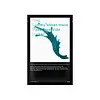What's inside
What's inside
 Key Ingredients
Key Ingredients

 Benefits
Benefits

 Concerns
Concerns

 Ingredients Side-by-side
Ingredients Side-by-side

Water
Skin ConditioningDipropylene Glycol
HumectantGlycereth-26
HumectantGlycerin
HumectantButylene Glycol
Humectant1,2-Hexanediol
Skin ConditioningPaeonia Suffruticosa Root Extract
Skin ProtectingCentella Asiatica Extract
CleansingPolyglyceryl-10 Laurate
Skin ConditioningXanthan Gum
EmulsifyingMoringa Oleifera Seed Extract
Skin ConditioningPortulaca Oleracea Extract
Skin ConditioningArginine
MaskingCarbomer
Emulsion StabilisingChamomilla Recutita Flower Extract
MaskingEthoxydiglycol
HumectantGlyceryl Caprylate
EmollientEthylhexylglycerin
Skin ConditioningSodium Hyaluronate
HumectantAllantoin
Skin ConditioningMadecassoside
AntioxidantSqualane
EmollientAniba Rosaeodora Wood Oil
AstringentPyrus Malus Fruit Extract
Skin ConditioningPrunus Serotina Fruit Extract
MaskingDisodium EDTA
Linalool
PerfumingWater, Dipropylene Glycol, Glycereth-26, Glycerin, Butylene Glycol, 1,2-Hexanediol, Paeonia Suffruticosa Root Extract, Centella Asiatica Extract, Polyglyceryl-10 Laurate, Xanthan Gum, Moringa Oleifera Seed Extract, Portulaca Oleracea Extract, Arginine, Carbomer, Chamomilla Recutita Flower Extract, Ethoxydiglycol, Glyceryl Caprylate, Ethylhexylglycerin, Sodium Hyaluronate, Allantoin, Madecassoside, Squalane, Aniba Rosaeodora Wood Oil, Pyrus Malus Fruit Extract, Prunus Serotina Fruit Extract, Disodium EDTA, Linalool
Water
Skin ConditioningGlycerin
HumectantPolyglycerin-3
HumectantButylene Glycol
HumectantDipropylene Glycol
HumectantHoney Extract
HumectantMelia Azadirachta Flower Extract
Skin ConditioningAureobasidium Pullulans Ferment
Skin ConditioningMelia Azadirachta Leaf Extract
Skin ConditioningCurcuma Longa Root Extract
MaskingOcimum Sanctum Leaf Extract
Skin ConditioningAlthaea Rosea Flower Extract
Skin ConditioningPropolis Extract
Skin ConditioningTheobroma Cacao Seed Extract
AntioxidantRoyal Jelly Extract
Skin ConditioningCorallina Officinalis Extract
Skin ConditioningPersea Gratissima Fruit Extract
EmollientLeucojum Aestivum Bulb Extract
Skin ProtectingBetaine
HumectantHydroxyacetophenone
AntioxidantCholeth-24
EmulsifyingAllantoin
Skin ConditioningTromethamine
BufferingCaprylyl Glycol
EmollientEthylhexylglycerin
Skin ConditioningPanthenol
Skin ConditioningDextrin
AbsorbentMaltodextrin
AbsorbentCarbomer
Emulsion StabilisingCaffeine
Skin ConditioningXanthan Gum
EmulsifyingDisodium EDTA
Parfum
MaskingBenzyl Benzoate
AntimicrobialWater, Glycerin, Polyglycerin-3, Butylene Glycol, Dipropylene Glycol, Honey Extract, Melia Azadirachta Flower Extract, Aureobasidium Pullulans Ferment, Melia Azadirachta Leaf Extract, Curcuma Longa Root Extract, Ocimum Sanctum Leaf Extract, Althaea Rosea Flower Extract, Propolis Extract, Theobroma Cacao Seed Extract, Royal Jelly Extract, Corallina Officinalis Extract, Persea Gratissima Fruit Extract, Leucojum Aestivum Bulb Extract, Betaine, Hydroxyacetophenone, Choleth-24, Allantoin, Tromethamine, Caprylyl Glycol, Ethylhexylglycerin, Panthenol, Dextrin, Maltodextrin, Carbomer, Caffeine, Xanthan Gum, Disodium EDTA, Parfum, Benzyl Benzoate
Ingredients Explained
These ingredients are found in both products.
Ingredients higher up in an ingredient list are typically present in a larger amount.
Allantoin is a soothing ingredient known for its protective and moisturizingg properties. Because of this, it is often added to products with strong active ingredients.
Studies show higher concentrations of this ingredient can promote wound healing.
Though it can be derived from the comfrey plant, allantoin is produced synthetically for cosmetic products to ensure purity.
Learn more about AllantoinButylene Glycol (or BG) is used within cosmetic products for a few different reasons:
Overall, Butylene Glycol is a safe and well-rounded ingredient that works well with other ingredients.
Though this ingredient works well with most skin types, some people with sensitive skin may experience a reaction such as allergic rashes, closed comedones, or itchiness.
Learn more about Butylene GlycolCarbomer is a polymer of acrylic acid. Its main role is to create a gel consistency.
A high amount of carbomer can cause pilling or balling up of products. Don't worry, most products contain 1% or less of carbomer.
Dipropylene Glycol is a synthetically created humectant, stabilizer, and solvent.
This ingredient helps:
Dipropylene glycol is technically an alcohol, but it belongs to the glycol family (often considered part of the ‘good’ alcohols). This means it is hydrating and gentle on skin unlike drying solvent alcohols like denatured alcohol.
As a masking agent, Dipropylene Glycol can be used to cover the smell of other ingredients. However, it does not have a scent.
Studies show Dipropylene Glycol is considered safe to use in skincare.
Learn more about Dipropylene GlycolDisodium EDTA plays a role in making products more stable by aiding other preservatives.
It is a chelating agent, meaning it neutralizes metal ions that may be found in a product.
Disodium EDTA is a salt of edetic acid and is found to be safe in cosmetic ingredients.
Learn more about Disodium EDTAEthylhexylglycerin (we can't pronounce this either) is commonly used as a preservative and skin softener. It is derived from glyceryl.
You might see Ethylhexylglycerin often paired with other preservatives such as phenoxyethanol. Ethylhexylglycerin has been found to increase the effectiveness of these other preservatives.
Glycerin is already naturally found in your skin. It helps moisturize and protect your skin.
A study from 2016 found glycerin to be more effective as a humectant than AHAs and hyaluronic acid.
As a humectant, it helps the skin stay hydrated by pulling moisture to your skin. The low molecular weight of glycerin allows it to pull moisture into the deeper layers of your skin.
Hydrated skin improves your skin barrier; Your skin barrier helps protect against irritants and bacteria.
Glycerin has also been found to have antimicrobial and antiviral properties. Due to these properties, glycerin is often used in wound and burn treatments.
In cosmetics, glycerin is usually derived from plants such as soybean or palm. However, it can also be sourced from animals, such as tallow or animal fat.
This ingredient is organic, colorless, odorless, and non-toxic.
Glycerin is the name for this ingredient in American English. British English uses Glycerol/Glycerine.
Learn more about GlycerinWater. It's the most common cosmetic ingredient of all. You'll usually see it at the top of ingredient lists, meaning that it makes up the largest part of the product.
So why is it so popular? Water most often acts as a solvent - this means that it helps dissolve other ingredients into the formulation.
You'll also recognize water as that liquid we all need to stay alive. If you see this, drink a glass of water. Stay hydrated!
Learn more about WaterXanthan gum is used as a stabilizer and thickener within cosmetic products. It helps give products a sticky, thick feeling - preventing them from being too runny.
On the technical side of things, xanthan gum is a polysaccharide - a combination consisting of multiple sugar molecules bonded together.
Xanthan gum is a pretty common and great ingredient. It is a natural, non-toxic, non-irritating ingredient that is also commonly used in food products.
Learn more about Xanthan Gum